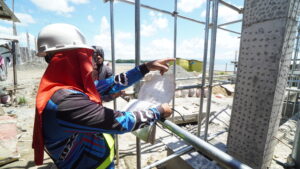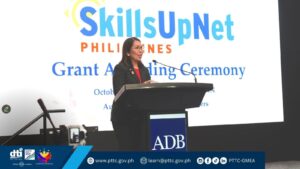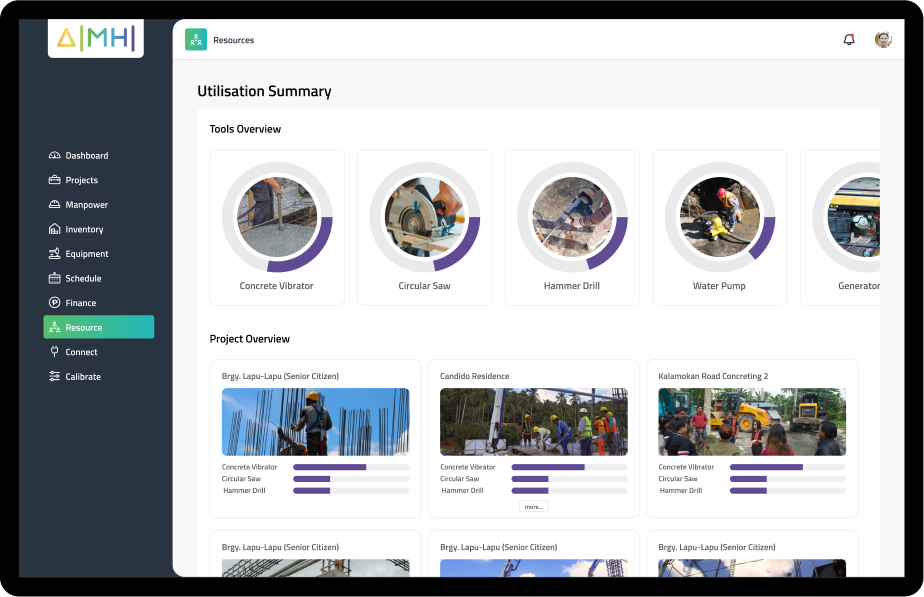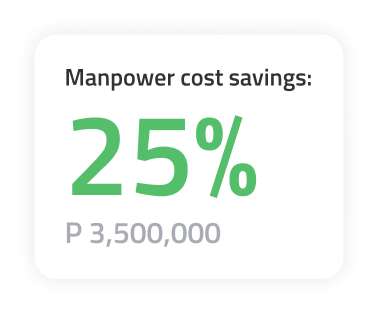
The emergence of smart cities represents a multifaceted revolution that transcends mere technological integration. Beyond the digital spectrum, these cities are committed to addressing pressing challenges and optimizing various aspects of urban life.
In technology, smart cities harness digital solutions to streamline services, making them more efficient and accessible to residents. This includes implementing advanced infrastructure, such as smart grids, intelligent transportation systems, and data-driven decision-making processes. These innovations not only enhance convenience but also contribute to a more sustainable and interconnected urban environment.
However, the scope of smart cities extends far beyond technology. Emphasizing environmental sustainability, these cities incorporate eco-friendly practices, renewable energy sources, and efficient waste management systems. By doing so, they strive to mitigate the ecological impact of urbanization and create a harmonious balance between technological progress and environmental responsibility.
Moreover, the social dimension of smart cities places a premium on improving the quality of life for residents. Initiatives like smart healthcare, education, and community engagement leverage technology to foster inclusivity, accessibility, and overall well-being. The focus on social cohesion seeks to create urban spaces that are efficient and conducive to their inhabitants’ holistic development and happiness.
In the governmental sphere, particularly in local government units (LGUs), smart cities leverage data analytics, artificial intelligence, and smart governance models to enhance public services. This includes optimizing resource allocation, improving public safety, and fostering transparent communication between citizens and authorities. The goal is to create a responsive and accountable governance structure that adapts to the evolving needs of a dynamic urban landscape.
Top 3 Smart Cities in the Philippines
- City of Manila
Upgrading the command center and implementing e-government services in the City of Manila stand as pivotal steps towards modernizing municipal operations and fostering citizen engagement. The upgraded command center can serve as the nerve center for efficient governance, harnessing advanced technologies like AI and data analytics to monitor citywide activities in real time. By integrating data from various departments and deploying sensors across the urban landscape, authorities can swiftly respond to emergencies, optimize resource allocation, and enhance overall public safety.
In tandem, introducing e-government services will revolutionize how citizens interact with municipal authorities. Online portals and mobile applications will offer convenient avenues for accessing essential services, from applying for permits to paying taxes, eliminating the need for lengthy queues and paperwork. Moreover, digital payment options will not only streamline financial transactions but also bolster transparency and accountability in governance. Citizens will gain greater visibility into the status of their requests, fostering trust and satisfaction in government responsiveness.
These initiatives promise a multitude of benefits, ranging from heightened efficiency and transparency to improved citizen access and participation. By leveraging technology to streamline processes and enhance service delivery, the City of Manila can establish itself as a model for 21st-century governance. However, successful implementation hinges on robust infrastructure, cybersecurity measures, and continuous stakeholder engagement to ensure inclusivity and address potential challenges. Through concerted efforts and a commitment to innovation, Manila can chart a course toward a more connected, responsive, and citizen-centric administration. - City of Cebu
Implementing a Bus Rapid Transit (BRT) system and a Digital Traffic Management System (DTMS) in Cebu City holds immense potential for addressing urban transportation challenges and enhancing overall city efficiency. The BRT system, characterized by dedicated lanes for buses, efficient boarding systems, and modern infrastructure, can significantly alleviate traffic congestion while providing a reliable and rapid transit option for commuters. By prioritizing public transportation and reducing reliance on private vehicles, the BRT system encourages sustainable mobility practices and mitigates environmental impacts.

Complementing the BRT system, the implementation of a DTMS offers sophisticated solutions for managing traffic flow and optimizing road usage. Utilizing advanced technologies such as real-time traffic monitoring, smart traffic signals, and predictive analytics, the DTMS enables authorities to proactively address congestion hotspots, reroute traffic, and synchronize signals for smoother traffic flow. Additionally, integration with mobile applications and digital platforms provides commuters with up-to-date traffic information, alternative routes, and public transit schedules, empowering them to make informed travel decisions and minimize delays.
The combined implementation of a BRT system and a DTMS not only enhances transportation infrastructure but also contributes to broader urban development goals. By promoting efficient public transit options and reducing traffic congestion, Cebu City can improve air quality, reduce carbon emissions, and enhance overall livability for residents. Moreover, the adoption of innovative digital solutions fosters a more connected and responsive urban environment, laying the foundation for future smart city initiatives and sustainable growth. Collaborative efforts between government agencies, private sector partners, and community stakeholders are essential to ensure successful implementation and maximize the socio-economic benefits of these transformative transportation projects.
- City of Davao
In Davao City, the fusion of a Converged Command and Control Center (C4) with Intelligent Transportation and Traffic Systems (ITTS), all wrapped up with a layer of security, is like a glimpse into the future of city living. Imagine a place where everything from traffic jams to emergencies is handled with a mix of precision and swiftness, thanks to a central hub that keeps an eye on the city’s pulse. This isn’t just about technology doing its thing; it’s about making life smoother and safer for everyone. With all these systems talking to each other, Davao City is turning into a place where you can get around more easily, knowing that there’s an ever-watchful eye making sure things run like clockwork.
The heart of this transformation lies in the ITTS, which is all about making getting from point A to point B not just faster but smarter. We’re talking about traffic lights that actually know how to respond to real-time traffic conditions, buses that don’t keep you guessing, and roads that aren’t perennially clogged. This system is like the city’s nervous system, constantly feeding information back to the control center, ensuring that whether you’re on your daily commute or out for a leisurely drive, the journey is as smooth as possible. It’s a game-changer, making public transport not just an option but a preference, and subtly nudging the city towards a greener, more sustainable future.
But what really ties it all together is the layer of security that blankets these technological advancements. It’s comforting to know that as the city strides into the future, it’s not just about moving faster but also about creating a safer, more secure environment. Cameras, emergency systems, and safety apps work in concert to preempt dangers and respond to them with lightning speed when they do arise. This isn’t about big brother watching over you; it’s about fostering a community where safety and efficiency go hand in hand, making Davao City not just a place to live, but a place to thrive. While weaving together such advanced systems is no small feat, facing challenges head-on is what pioneering change is all about. After all, at the end of the day, it’s about making life better for every person who calls Davao City home.
On AI-Integrated Smart Cities
Artificial Intelligence Meets Human Intelligence (AIMHI), as an All-in-one AI-driven construction management platform, equips contractors with a robust set of tools to propel the development of smart cities. The platform’s AI-powered solutions revolutionize the estimation process, minimizing errors and hastening project timelines. Through a real-time cost and expense summary on the dashboard, AIMHI empowers decision-making and financial planning, ensuring centralized control for streamlined navigation through project costs. This enhances financial management and resource allocation, making project management more accessible, accurate, and efficient for engineers.
- Maximize Time Efficiency with Cost Monitoring
AIMHI’s AI-powered tools offer a groundbreaking approach to streamlining the conventional and time-intensive estimation process. These tools provide an invaluable resource for novice site engineers, enabling them to mitigate the risk of errors in cost estimation and expedite the entire project timeline.
The cost and expense summary on the dashboard serves as a centralized control center, offering a comprehensive and panoramic view of all project-related expenses. This feature not only facilitates real-time decision-making but also ensures that engineers are continuously well-informed about the financial health of their projects. The dashboard acts as a dynamic tool, allowing engineers to navigate through project costs effortlessly, enabling better financial planning and resource allocation. Ultimately, AIMHI’s innovative approach transforms the landscape of project management, making it more accessible, accurate, and efficient for engineers at all levels of experience. - Enhance Project Coordination and Communication
In construction projects, effective communication stands as a fundamental pillar for success, and AIMHI addresses this need with its advanced communication capabilities. By providing a centralized platform, AIMHI enables the seamless dissemination of real-time updates, a feature particularly valuable for first-time site engineers managing diverse teams. The overview tab in the project module emerges as a potent tool for enhancing communication, as it visually represents the alignment between initial estimates and actual costs. This not only facilitates the accurate conveyance of financial information but also promotes transparency and collaboration among various project stakeholders.
The real-time nature of AIMHI’s communication platform ensures that crucial project information is delivered promptly to all relevant parties, allowing for quick decision-making and agile responses to any emerging issues. This level of transparency not only enhances the efficiency of the project management process but also fosters a collaborative environment where team members can work cohesively towards shared goals. Ultimately, AIMHI’s commitment to effective communication contributes significantly to the overall success and smooth execution of construction projects, regardless of the level of experience of the site engineers involved. - Explore Essential AIMHI Features
A critical aspect of optimizing project performance analysis lies in thoroughly understanding the key features of AIMHI’s dashboard. The metric usage feature, in particular, plays a pivotal role by providing engineers with valuable insights into key project metrics. This data-driven approach empowers engineers to make informed decisions, enhancing the overall efficiency and success of their projects. Familiarizing oneself with this feature ensures that engineers can leverage the power of metrics to assess and refine their strategies for optimal outcomes.
Furthermore, delving into AIMHI’s finance module proves essential for gaining a nuanced understanding of financial aspects such as cash flows, outflows, and the comparison between budgeted and actual costs. This financial acumen is especially crucial for first-time site engineers, as it equips them with the knowledge needed to manage resources and navigate projects toward financial success judiciously. By using the finance module, engineers can not only track expenses but also proactively identify areas for cost optimization, contributing to the overall financial health and sustainability of the project. In essence, mastering the dashboard features of AIMHI becomes a cornerstone for effective project management and success. - Optimize Scheduling for Project Success
The scheduling module within AIMHI proves to be a dynamic and indispensable tool for first-time site engineers, offering a detailed view of project timelines. With daily, weekly, and monthly scheduling views, engineers can gain a granular understanding of the project’s progress and effectively manage timelines. The progress tracking feature enhances this capability, providing a visual representation of completed work and potential delays. This proactive approach to project management allows engineers to address challenges promptly, ensuring that the project stays on schedule.
By utilizing AIMHI’s scheduling module, first-time site engineers can mitigate the risk of delays and enhance overall project success. The ability to track progress at various intervals not only facilitates efficient time management but also enables a more accurate assessment of the project’s trajectory. This proactive management approach is crucial for staying on top of potential issues, making adjustments as needed, and ultimately ensuring that the project is completed within the stipulated timelines. In summary, AIMHI’s scheduling module serves as a dynamic and effective tool for empowering engineers to optimize project timelines and contribute to the overall success of their projects. - Unlock the Full Potential of AIMHI’s Project Module
AIMHI’s project module emerges as a comprehensive hub, serving as a centralized repository for first-time site engineers to gain a thorough understanding of various project aspects. Within this module, engineers can delve into tabs such as estimate, scope of work, and delayed/underbudget, providing valuable insights into the dynamics of the project. The estimate tab enables engineers to analyze the initial project estimates, while the scope of work tab offers a detailed overview of the tasks and responsibilities involved. The delayed/under-budget tab allows for a focused examination of project timelines and financial aspects, aiding engineers in identifying potential issues early on.
In addition to these fundamental tabs, AIMHI’s project module offers supplementary tools such as equipment, team, and report tabs. These features facilitate efficient resource and personnel management. The equipment tab allows engineers to oversee the status and allocation of project resources, while the team tab offers insights into the composition and roles of the project team. The report tab provides a structured way to document project progress and outcomes. Together, these tabs ensure that all facets of a project are well-coordinated, documented, and easily accessible, empowering first-time site engineers to navigate their projects with efficiency and effectiveness. - Stay Informed about AIMHI’s Advancements
AIMHI’s unwavering dedication to continuous improvement is evident through its pioneering strides in technology, notably with the incorporation of predictive AI and predictive AI capabilities. These advancements mark a significant leap forward, providing first-time site engineers with invaluable tools for enhancing project management. Predictive AI empowers engineers with the ability to foresee potential challenges, offering insights into project profitability, scheduling, and resource allocation. This foresight allows for proactive decision-making, enabling teams to address issues before they escalate and fostering a more streamlined and efficient project execution.
Furthermore, the introduction of predictive AI takes AIMHI’s commitment to excellence a step further. Site engineers utilizing this capability gain access to actionable recommendations for optimizing project outcomes. By harnessing the power of predictive AI, engineers can not only identify potential issues but also receive tailored suggestions on how to address and overcome them. This comprehensive approach to project management ensures that AIMHI’s innovative technologies not only predict challenges but also guide engineers toward solutions, ultimately contributing to the continuous improvement and success of projects under their purview.
Takeaway
AIMHI, an AI-driven construction management platform, plays a crucial role in the evolution of smart cities by streamlining processes for contractors. AIMHI’s tools minimize errors in cost estimation, enhance communication, and contribute to efficient decision-making and proactive project management. The platform’s commitment to continuous improvement through predictive AI and prescriptive AI ensures that engineers can predict challenges and receive actionable recommendations for optimizing project outcomes. As smart cities strive for efficiency, sustainability, and connectivity, AIMHI empowers stakeholders, contributing to the establishment of more advanced and collaborative urban spaces.
Construction professionals and LGUs eyeing a transition to smart cities can explore AIMHI’s user-friendly interface for PHP 1,050.00. Book a demo at www.aimhi.ai and redefine project management for more profitable construction projects in 2024.
For more information, contact AIMHI via email at accounts@aimhi.ai or call 0917-707-8008. Your journey to securing more profitable construction projects in 2024 begins with AIMHI.








